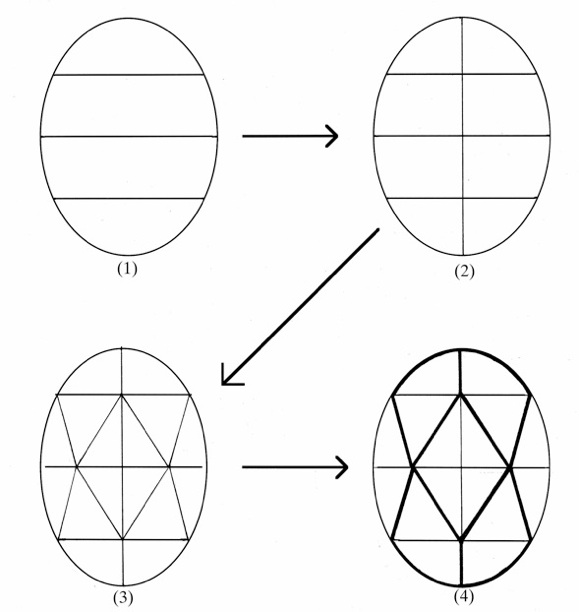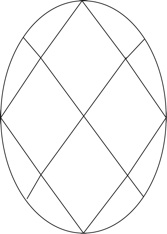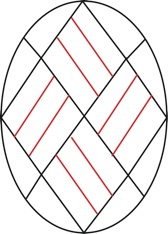12 Diamond
Division
12 Diamond
Division




Pictured above are several of my brown egg pysanky using what can best be described as a “12 diamond” division. These particular pysanky are my own designs. (You can view more of them here.)
This division is not a commonly used traditional Ukrainian division; you won’t find many pysanky of this type in collections of Ukrainian folk pysanky. This example is from the Chernihiv region of Ukraine:

It is a common division, however, in Rumanian Easter eggs (ouă vopsite). In recent years there has been much cross-border exchange of designs, motifs and divisions, and more “modern” pysanky like these are beginning to appear in Ukraine.
I enjoy this division because it is different, and because it is fairly simple to make but deceptively difficult-looking.
The division is an interesting one. The pysanka is divided into three rows of interlocking diamonds. (This is best seen in the middle pysanka, which does not have any other designs to distract from the simple division.) This division may look quite complex, but is fairly easy to make once you figure out the metrics. The egg is initially divided into four equal bands horizontally with three pencil lines (1). Two up-and-down lines are drawn around the egg, dividing it into four sections longitudinally, also in pencil (2).

“X’s” are drawn as shown in (3), and the diamond pattern begins to emerge. (The lines look choppy here, in two dimensions, but on the rounded surface of the egg it should be one fluid line from the top to the bottom of the ”X”.) This is the basic framework of the design.
Now we wax in, as shown with the dark lines in (4) – first, a row of four diamonds around the middle; then, we draw a line from the top of each diamond to the end of the egg. The result – twelve diamonds in three rows of four. This is the same egg as above, but turned one eighth rotation:

Once the basic division of the egg is complete, various motifs are filled in to complete the pysanka. A design is drawn in each of the diamonds in the middle row. The same design, but tipped 90º (i.e. perpendicular) is then drawn in each of the remaining diamonds. Quite simple, but it creates attractive and complex designs.

As can be seen in the photos here, or just below, the resulting complexity of the designs is such that turning the egg only slightly changes its entire appearance.




Back to Main Writing Pysanky page
Back to Main Pysankarstvo page
Note: All photos, illustrations and text © Luba Petrusha 2007-10. All Rights Reserved. Reproduction prohibited without expressed consent. May contact via e-mail (link below).